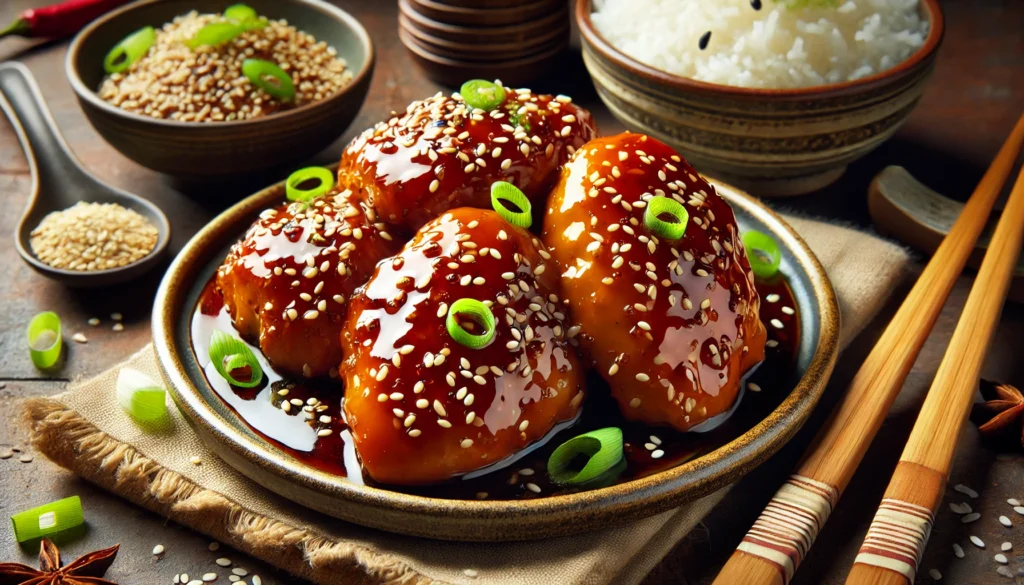Soy sauce, with its rich umami flavor and versatile uses, is one of the most iconic condiments in culinary history. Originating in East Asia, it has become a global staple, enhancing dishes from stir-fries to marinades. This article delves into the history, types, production methods, and creative ways to use soy sauce in cooking, particularly with chicken dishes.
The Origins of Soy Sauce
Soy sauce dates back over 2,000 years to ancient China, where it was developed as a method to preserve food. Its evolution spread across East Asia, with Japan, Korea, and Southeast Asia adapting the recipe to suit their unique cuisines. Initially, soy sauce was made from fermented soybeans, grains, and salt, creating a salty and savory liquid that complemented a variety of dishes.
Types of Soy Sauce
There are numerous varieties of soy sauce, each with distinct characteristics that suit different cuisines and recipes. Here are some of the most popular types:
1. Light Soy Sauce
- A staple in Chinese cooking, light soy sauce is thinner and saltier. It is used to season dishes without overpowering their natural flavors.
- Perfect Pairing: Use it in stir-fries or as a dipping sauce for chicken dumplings.
2. Dark Soy Sauce
- Thicker and less salty, dark soy sauce adds depth and color to dishes. It is often used in braised recipes.
- Perfect Pairing: Try it in recipes like “Soy-Braised Chicken with Mushrooms.”
3. Tamari
- Originating from Japan, tamari is often gluten-free and has a milder taste. It is perfect for dipping or as a finishing touch.
- Perfect Pairing: Drizzle tamari over grilled chicken skewers for a smoky, savory finish.
4. Sweet Soy Sauce (Kecap Manis)
- A popular Indonesian variant, sweet soy sauce is thick, sweet, and perfect for glazing meats.
- Perfect Pairing: Use it as a glaze for honey soy chicken wings.
5. Low-Sodium Soy Sauce
- For health-conscious cooks, low-sodium soy sauce provides all the flavor with reduced salt content.
- Perfect Pairing: Marinade chicken thighs in low-sodium soy sauce with garlic and ginger for a healthier option.
The Art of Soy Sauce Production
Producing soy sauce is both an art and a science. The process involves fermenting soybeans and wheat with a specific mold called Aspergillus oryzae. After fermentation, the mixture is pressed to extract the liquid, which is then pasteurized and aged for enhanced flavor.
Traditional methods can take months or even years, resulting in a deep, complex taste. Modern production techniques accelerate the process but often compromise the flavor’s depth. The choice between traditional and commercial soy sauces depends on the recipe and desired outcome.
Soy Sauce in Chicken Recipes
Soy sauce shines when paired with chicken, adding depth and savoriness to countless recipes. Here are a few dishes where soy sauce takes center stage:
1. Soy Sauce Chicken
- A classic Chinese dish where chicken is simmered in a flavorful mixture of soy sauce, star anise, and ginger. The result is tender, aromatic meat with a glossy finish.
2. Teriyaki Chicken
- Originating from Japan, teriyaki sauce blends soy sauce with mirin and sugar, creating a sweet and savory glaze perfect for grilled chicken.
3. Honey Soy Garlic Chicken
- This dish combines the sweetness of honey with the umami of soy sauce, creating a sticky, caramelized coating on baked chicken wings or drumsticks.
4. Korean Soy-Garlic Fried Chicken
- Korean fried chicken is famous for its crispy coating and bold flavors. A soy-garlic glaze adds a punch of umami to every bite.
5. Sweet and Sour Chicken with Soy Sauce
- By adding soy sauce to the sweet and sour mix, this dish achieves a perfect balance of tanginess and umami.

Creative Uses of Soy Sauce
Beyond traditional recipes, soy sauce can be a secret weapon in modern kitchens:
- Marinades
- Combine soy sauce with olive oil, garlic, and citrus juice to create a tenderizing marinade for chicken breasts.
- Soups and Stews
- A splash of soy sauce can elevate chicken noodle soup, adding depth to the broth.
- Glazes
- Mix soy sauce with honey and chili flakes for a quick glaze on roasted chicken wings.
- Dipping Sauces
- Blend soy sauce with sesame oil and vinegar for a versatile dipping sauce.
- Salad Dressings
- Add a dash of soy sauce to vinaigrettes for an umami-rich twist.
Health Benefits of Soy Sauce
While soy sauce is known for its high sodium content, it also offers surprising health benefits:
- Rich in Antioxidants: Soy sauce contains antioxidants that help combat free radicals.
- Boosts Digestion: Fermented soy sauce can aid in digestion by introducing beneficial enzymes.
- Low in Calories: Despite its bold flavor, soy sauce is relatively low in calories, making it a great choice for enhancing meals without added fat.
Pairing Soy Sauce with Global Cuisines
While soy sauce is rooted in Asian cuisine, its adaptability has made it a global phenomenon:
- In Italian Cooking: Add a splash of soy sauce to tomato-based sauces for a deeper flavor.
- In Mexican Dishes: Mix soy sauce with lime juice and spices for a unique chicken taco marinade.
- In American Barbecue: Incorporate soy sauce into barbecue marinades for ribs or grilled chicken.
Final Thoughts
Soy sauce is more than just a condiment; it is a bridge between cultures and cuisines. Its ability to transform dishes with just a few drops makes it indispensable in kitchens worldwide. Whether you’re creating a traditional soy sauce chicken or experimenting with fusion dishes, soy sauce will always be a versatile and flavorful ally.

